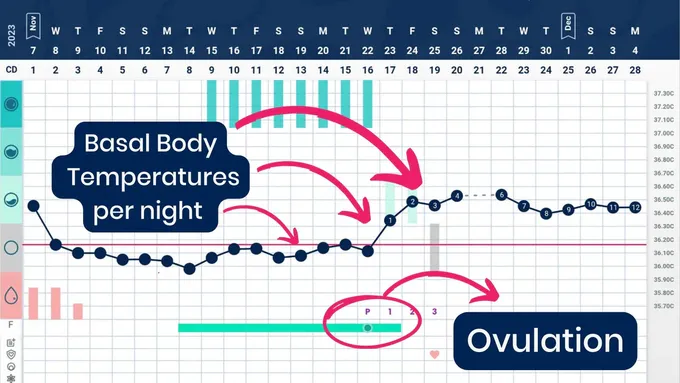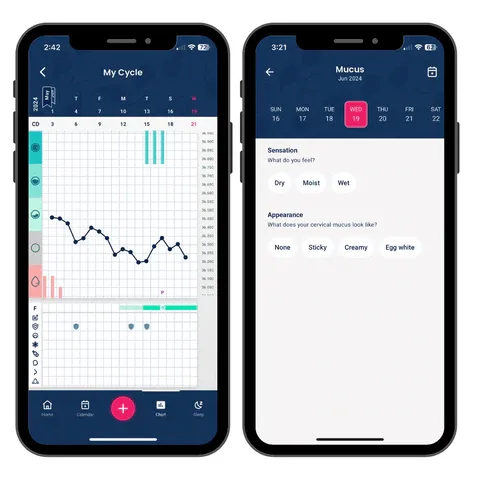The Top 2 Fertility Signs to Look for & Record
Updated June 20, 2025

Tracking your menstrual cycle is about observing your body's fertility signs to help you identify your fertile window and when ovulation occurs.
There are several signs and symptoms you can record, but which matter? Will they all let you know you have ovulated successfully? Are some more important or accurate than others? In this two-part series, we break them down so you can avoid the disappointment and confusion that can come when the signs you are observing don't seem to add up.
Primary Signs
There are two primary observations that, when combined, can definitively let you know when you ovulate. These are your nightly sleeping temperature (Basal Body Temperature or BBT) and Cervical Mucus.
Basal Body Temperature
Your BBT will remain in a lower range during the first half of your cycle, and then it will jump to a higher range after you ovulate. You then expect to see your temps remain elevated until your next period or throughout pregnancy if conception takes place. Adding a daily BBT result to your chart (example below) will help you confirm ovulation and let you know when your fertile window has ended.
Cervical Mucus
Cervical mucus changes in consistency (peak fertile mucus is fluid that closely resembles raw egg whites) and volume in the lead up to ovulation, and then right after the egg is released, it dries up. This primary sign will let you know when your fertile window opens and confirms when it closes again.
Put them together
Observing these two symptoms together and noting them on a chart each day will give you the complete picture of your cycle. You will be able to see if and when ovulation occurred and successfully avoid pregnancy or maximize your chances of conception, whatever your reason for cycle tracking.
To know how to interpret these two signs accurately, its best to learn a Symptothermal method (STM) of fertility awareness. STM knowledge is crucial if you are going to avoid pregnancy effectively, and even if you are aiming to conceive, learning from a qualified instructor or through self-teaching resources will help you feel more in control as you understand what your charts are telling you.
Now that you have your 2 primary signs to start charting, join us next time as we explore several secondary symptoms you may want to add as you go along. Click here for part two!







